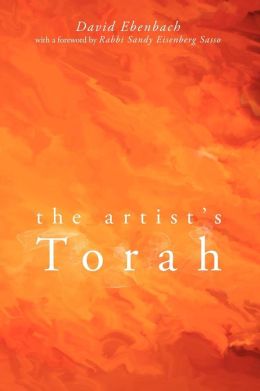The Lilith Blog 1 of 2
May 22, 2013 by Bonnie Beth Chernin
The Artist’s Torah
 I’m always on the look-out for commentary I can read while the Torah’s chanted in Hebrew I don’t understand during Saturday morning Shabbat services. So when I came across The Artist’s Torah by David Ebenbach, also the author of two short story collections and a book of poetry, I was grateful to have new material to delve into.
I’m always on the look-out for commentary I can read while the Torah’s chanted in Hebrew I don’t understand during Saturday morning Shabbat services. So when I came across The Artist’s Torah by David Ebenbach, also the author of two short story collections and a book of poetry, I was grateful to have new material to delve into.
But you don’t need to attend religious services to enjoy Ebenbach’s thoughtful book. And you don’t need to be an artist. Anyone interested in the creative process will find something meaningful in this rich commentary that explores the weekly Torah readings through the gaze of understanding the creative life.
In a recent interview with Ebenbach (who crossed paths with me 15 years ago when we both attended an MFA in writing program), he said, “The intention is not that you have to be traditionally religious to find yourself in these pages,” and added, “The book wrestles with what it means to be spiritually engaged and doesn’t make any assumptions about the form that takes.”
Ebenbach poses the big questions: What is creativity? Where does it come from? How does creativity get blocked and how can blocks be overcome? He sets out to find what the sacred text of Judaism has to say in response. In addition, he presents the challenge of whether he can find insights throughout the Torah and not just in Genesis with the explicit focus on creation.
With graceful interpretive understanding, Ebenbach rises to the challenge and finds meaning for a creative life even in passages that address impurity, tumah. He tries to grasp why the Torah uses this term to also define women who have recently given birth.
In the weekly reading, Tazria-M’tzora, it is written that a post-partum woman is impure for one to two weeks (depending on the sex of the child) and can’t enter the sanctuary for another 33 to 66 days after that.
“The Torah puts such a positive light on childbirth, raises it up as such a central goal, so how can it lead to tumah?” Ebenbach asks.
He defines tumah as someone who needs temporary separation from the community after coming into contact with “very powerful forces… until they are ready to return to everyday life again.”
As another example of a need for separation following a powerful experience, Ebenbach cites the tradition in the Jewish marriage ceremony when the couple is briefly in seclusion after the ritual service, before they rejoin their guests.
He connects this understanding of separation after significant moments to the immersion in creativity and the temporary isolation that ensues when the intensity of the creative process ends.
Throughout The Artist’s Torah, Ebenbach draws on a range of Jewish artists—including Marc Chagall, Judy Chicago, Meredith Monk, Woody Allen, Bob Dylan, and Muriel Rukeyser—to supplement the insights into creativity that he gleans from the weekly Torah readings.
Partners in building the world
The book is full of deep insights into everything from sacrifices to the construction of the moveable ark and the role of temple priests as well as envy, passion, and mystery.
I found especially compelling Ebenbach’s understanding of the loss of Eden as the beginning of human civilization.
“In the perfection of the garden, there could be no Torah scrolls, no Judaism, no sculpture or music; Eden was already perfect and needed none of these things. Only afterwards were human beings capable of participating in meeting these needs.”
He refers to this as our legacy of “partnership with God in building and rebuilding the world.” It leaves room for a calling for creativity, for art.
“This is about embracing the creative opportunity… It means calling things what they are, and calling out the truth, loudly, across the empty spaces that separate us from one another, so that others might hear.”
It is a calling, he reminds us, that is not for artists only. “It is a calling every one of us is able to hear, and receive.”
 Please wait...
Please wait...